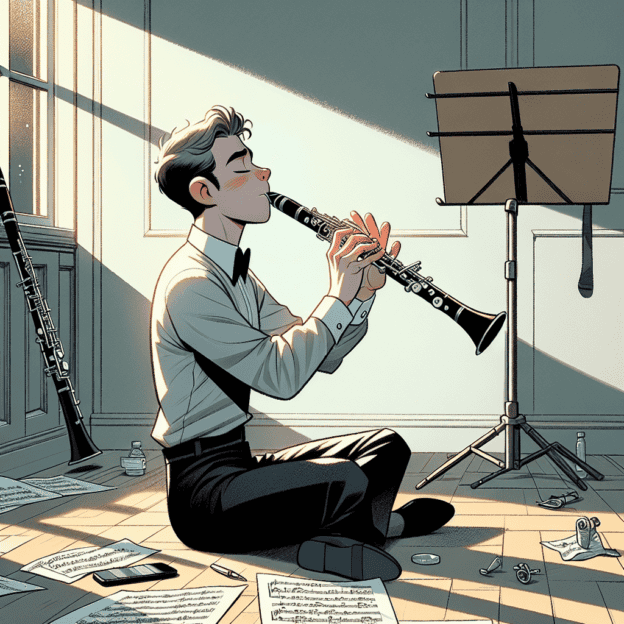Mastering Circular Breathing: A Clarinetist's Journey
For many clarinet players, the ability to keep sound flowing seamlessly feels like a superpower. That's where circular breathing comes into the picture—a skill that takes practice and persistence but can elevate your playing to new heights. It's one of those techniques that separates seasoned players from the rest.
So, what is circular breathing, and why do clarinetists use it? It's essentially a method where you breathe in through your nose while simultaneously expelling air stored in your cheeks, creating a continuous airflow through the instrument. If you're imagining an air-filled hamster wheel whirring in motion, you're not too far off! While this doesn't come naturally to most, don't worry—mastery comes with time, effort, and, honestly, a bit of trial-and-error.
Benefits of Circular Breathing
You might ask, “Why put in all this effort?” Circular breathing allows players to sustain long notes, master challenging passages, and make demanding pieces sound effortless. It's particularly useful for solo works, jazz improvisation, and any performance that doesn't allow for a break to catch your breath. Many renowned clarinetists rely on this technique—and for good reason.
| Benefit | Description |
|---|---|
| Sustained Notes | Hold notes for extended periods without interruption |
| Seamless Phrases | Play long musical phrases without breaking for breath |
| Improved Control | Better control over dynamics and tone quality |
| Enhanced Repertoire | Ability to perform more challenging pieces |
The Learning Process
Learning circular breathing might feel like trying to pat your head while rubbing your stomach. The coordination can be tricky at first. Start small—fill your cheeks with air as if you're preparing to puff out birthday candles. Now, try exhaling from your cheeks without using your lungs while breathing through your nose. Got it? If not, don't worry—many clarinet players have spent days, weeks, or even months practicing this in front of a mirror. Consider those moments of fumbling as steps towards improving your skills.
Once you get the hang of basic circular breathing, incorporate it into your playing. Start with long tones—pick a note, hold it, and try the process. You'll likely notice a bit of wobble in the sound at first as you switch between stored air and lung power. That's normal; smooth transitions come with regular practice.
Choosing the Right Instrument
This skill can be particularly rewarding when playing instruments like those made by Martin Freres Clarinets. Known for their rich tone and responsiveness, their instruments often complement the finesse that circular breathing requires. While I won't focus too much on specific brands, it's worth noting how quality craftsmanship can make advanced techniques more satisfying to perform.
Practice Tips and Progression
Where do you go from here? Add circular breathing to your repertoire gradually. Use it on simpler pieces before attempting more challenging compositions. A great place to experiment is with slow, lyrical pieces where holding a note longer enhances the musical expression. Move to quicker passages or trios once you feel confident.
You might be wondering, “Does everyone need to learn this?” Not necessarily. Circular breathing isn't a requirement, but it's a valuable skill for a clarinetist. It's also an impressive technique to show off to your fellow musicians! That said, some players find they don't need it often in certain styles, such as orchestral playing, where phrases naturally allow for breaths.
Personal Growth and Connection
Beyond technical advantages, circular breathing can transform a player's relationship with their instrument. You might surprise yourself by feeling a deeper connection with the clarinet as you master it. Think of it as breaking past limits you didn't know you had.
Preparation and Maintenance
Of course, as with most technical skills, preparation is key. Exercises that expand lung capacity, improve diaphragm control, or develop finer motor coordination all aid circular breathing. Consider warmups that engage your lips and cheeks—trumpet players might call this 'embouchure gymnastics.' And always ensure your clarinet is in top shape to offer the smoothest response, whether it's a treasured Martin Freres model or another carefully maintained instrument.
Conclusion
Every clarinetist takes their own path when picking up new techniques. Whether circular breathing becomes a staple of your toolkit or a rarely-used skill, the important thing is how it fits into your musical goals. For some, it opens doors to solo opportunities and impressive performances; for others, it may simply be an enriching journey of discovery.
So, roll up your sleeves (or puff out your cheeks, really) and give it a go. Whether you're just starting this adventure or revisiting it as an experienced player, remember—it's all about patience, perseverance, and enjoying the music-making process.







